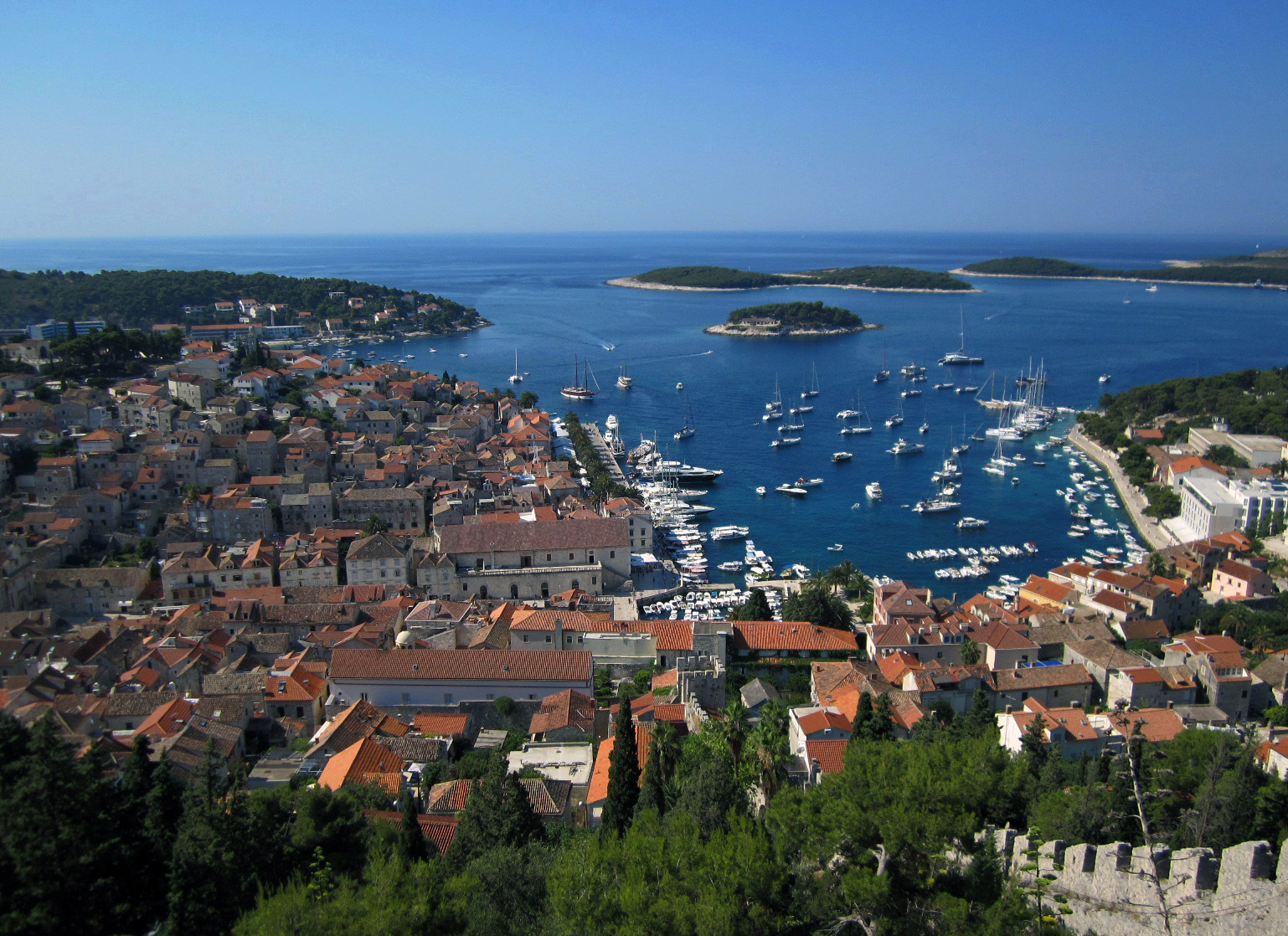 It’s an hour by Catamaran from the Lazaretti in Split to Hvar. It’s a big Catamaran and the ride is really relaxing. Th eonly problem is you can only buy the ticket on the day of departure and this time of year the boats to Hvar fill up very fast. The ferry office opens at 6am. I was there at 6:30. There was already a line but I got 2 tickets for the 11:30 sailing. The costs is 47 kuna (about $7.50) person. It’s a great deal.
It’s an hour by Catamaran from the Lazaretti in Split to Hvar. It’s a big Catamaran and the ride is really relaxing. Th eonly problem is you can only buy the ticket on the day of departure and this time of year the boats to Hvar fill up very fast. The ferry office opens at 6am. I was there at 6:30. There was already a line but I got 2 tickets for the 11:30 sailing. The costs is 47 kuna (about $7.50) person. It’s a great deal.
The closest island to Split is Brac, the largest island on the Dalmatian Coast. Brac is a hot, dry island whose main crop is rocks. The White House in Washington DC was built from the white stone of Brac. Hvar, on the other hand, is a green island that produces, olive oil, lavender and wine; we discovered a great red wine here called Pakleno Luviji, a local version of the Plavac Mali, ancestor to the American Zinfindel. We chose the green island.
Hvar reportedly receives 2,724 hrs of sunshine a year. There are 8,760 hours in a year, and figuring that close to 4,000 of them are at night, that’s a lot of sunshine. The weather is so reliable, hotels give discounts on cloudy days and fee stays if it snows. The population of Hvar is around 11,500, but in the summer months it probably doubles with visitors and tourists.
The island was first settled in the 4th century by the Illyrians. It’s been a port of trade for the Greeks, Romans, Byzantines, Venetians, Slavs, Austrians, French, Serbs, and Croats. During Tito’s Yugoslavia it was a vacationland for the wealthy Soviets. It’s still a vacationland for wealthy ex-Soviets and lots of other people like us.
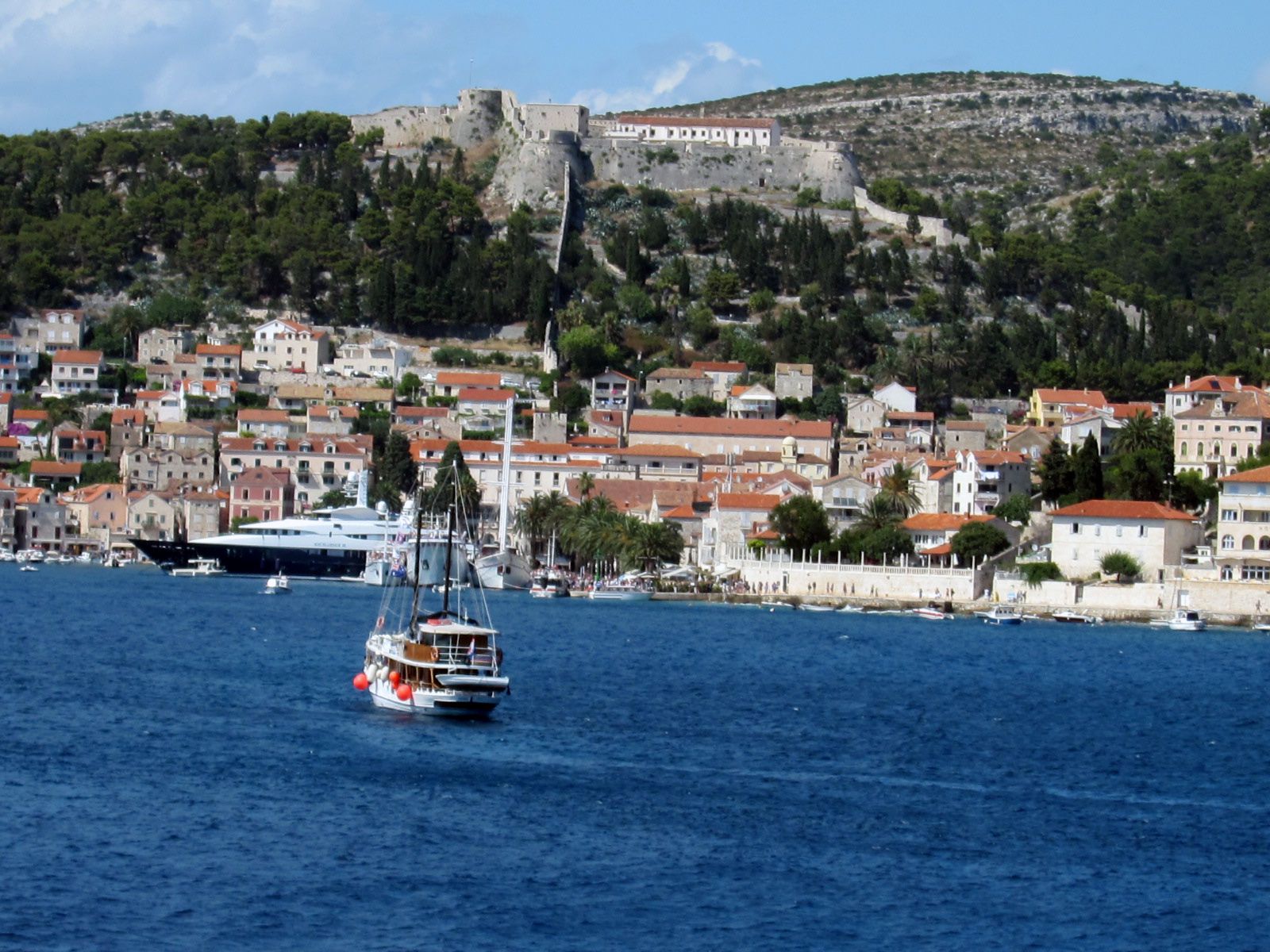 Hvar town was built in the 13th century and there are some old Romanesque buildings that date back to the origins, but most of the polished marble streets and stone buildings have more of a Venetian feeling. The town is built up a hillside reaching the large Fortessa Spagnola that guards the town and the harbor from the top of the peak. The 16th century Venetian fortress (built during the war with the Ottoman Turks) is in great shape and the old protective curtain walls leading down to the harbor are still in place although they haven’t had to protect anything for at least 300 years. The main gate from the harbor to the fortress is now a quaint spot for cafes and souvenir shops.
Hvar town was built in the 13th century and there are some old Romanesque buildings that date back to the origins, but most of the polished marble streets and stone buildings have more of a Venetian feeling. The town is built up a hillside reaching the large Fortessa Spagnola that guards the town and the harbor from the top of the peak. The 16th century Venetian fortress (built during the war with the Ottoman Turks) is in great shape and the old protective curtain walls leading down to the harbor are still in place although they haven’t had to protect anything for at least 300 years. The main gate from the harbor to the fortress is now a quaint spot for cafes and souvenir shops.
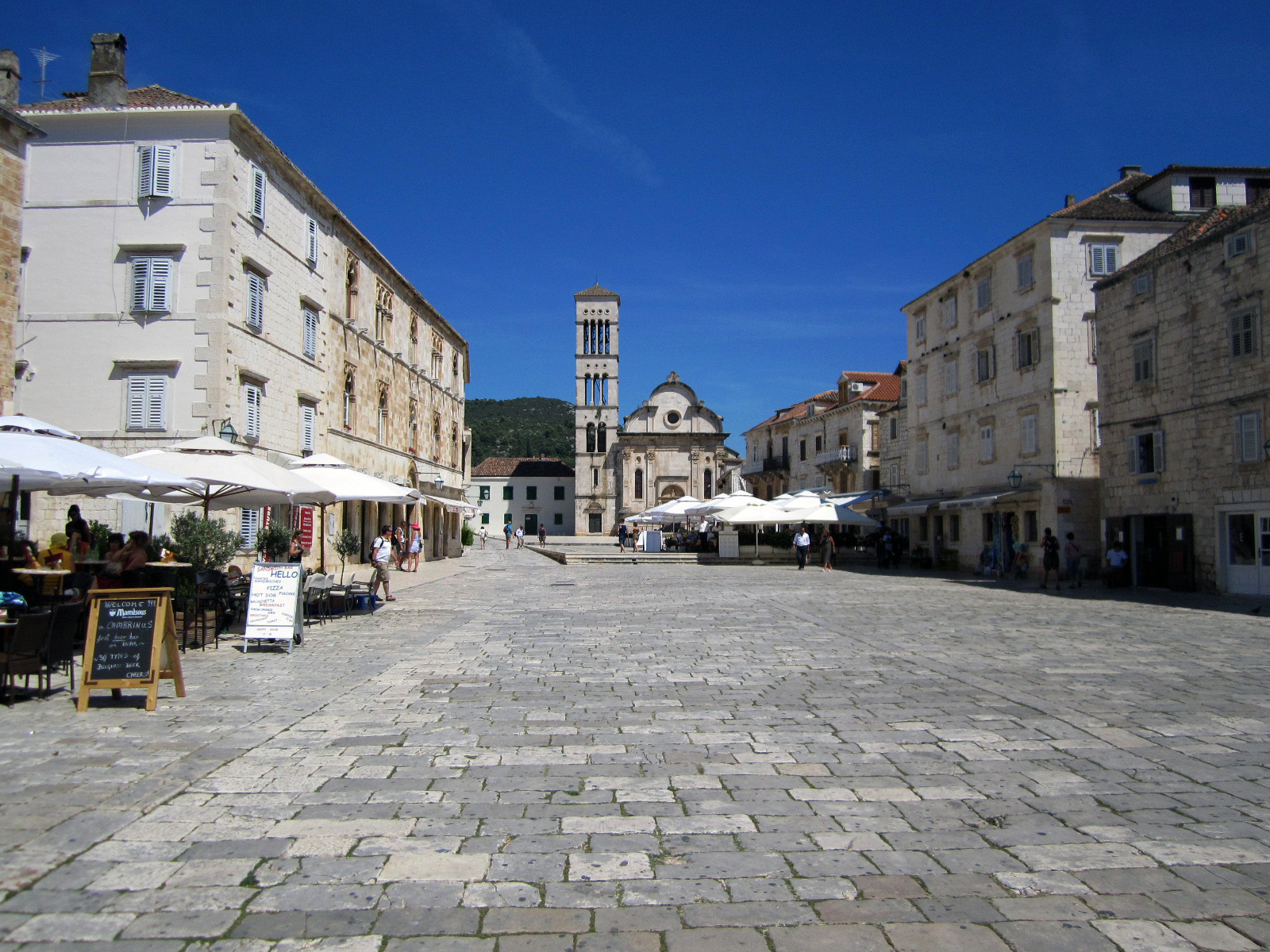
Back down in the harbor, the main square, Trg Sveti Stjepana, named for the 3rd century Pope, Saint Stephen I is the largest square in all of Dalmatia, over 4500 square meters of marble stones polished from years of footwear.
At the end of the square are the old Theatre and the Armory. The armory was used as the town cinema during World War II. These days it’s a big exhibit hall. The theatre goes back to 1612. It was the first European theatre that allowed poor and rich to sit side by side. The small theatre fell into disrepair in the 1980s and although it looks like it’s being restored, the locals just shrug their shoulders when we ask them about the progress of the renovation.
Our hotel is literally a 2 minute walk from the gangplank of the Ferrydock. As you get off the boat, there are countless elderly women holding up signs for rooms and apartments, trying to get you to stay in their houses for a few kuna per night. I’m sure it’s an amazing story and experience, but we chose the Hotel Riva, one of the Sunicar Hvar hotels developed in the past few years. There are at least 5 Sunicar Hvar hotels along the harbor and probably more of them around the island. Some of them, like the Amphora are large beach resorts, although the beaches on the island are all rocks or pebbles. Our receptionist told us that at the Amphora you go to see the other people, you come to the Riva to “be seen”.
The Riva is a small hotel with very small rooms. In fact for one person to move around the room and use the bathroom, the other person had to stay on the bed. However it does have a great position along the harbor promenade where we spend our late afternoons enjoying cool refreshing beverages, watching the people go by, or maybe, as the receptionist points out, they’re watching us.
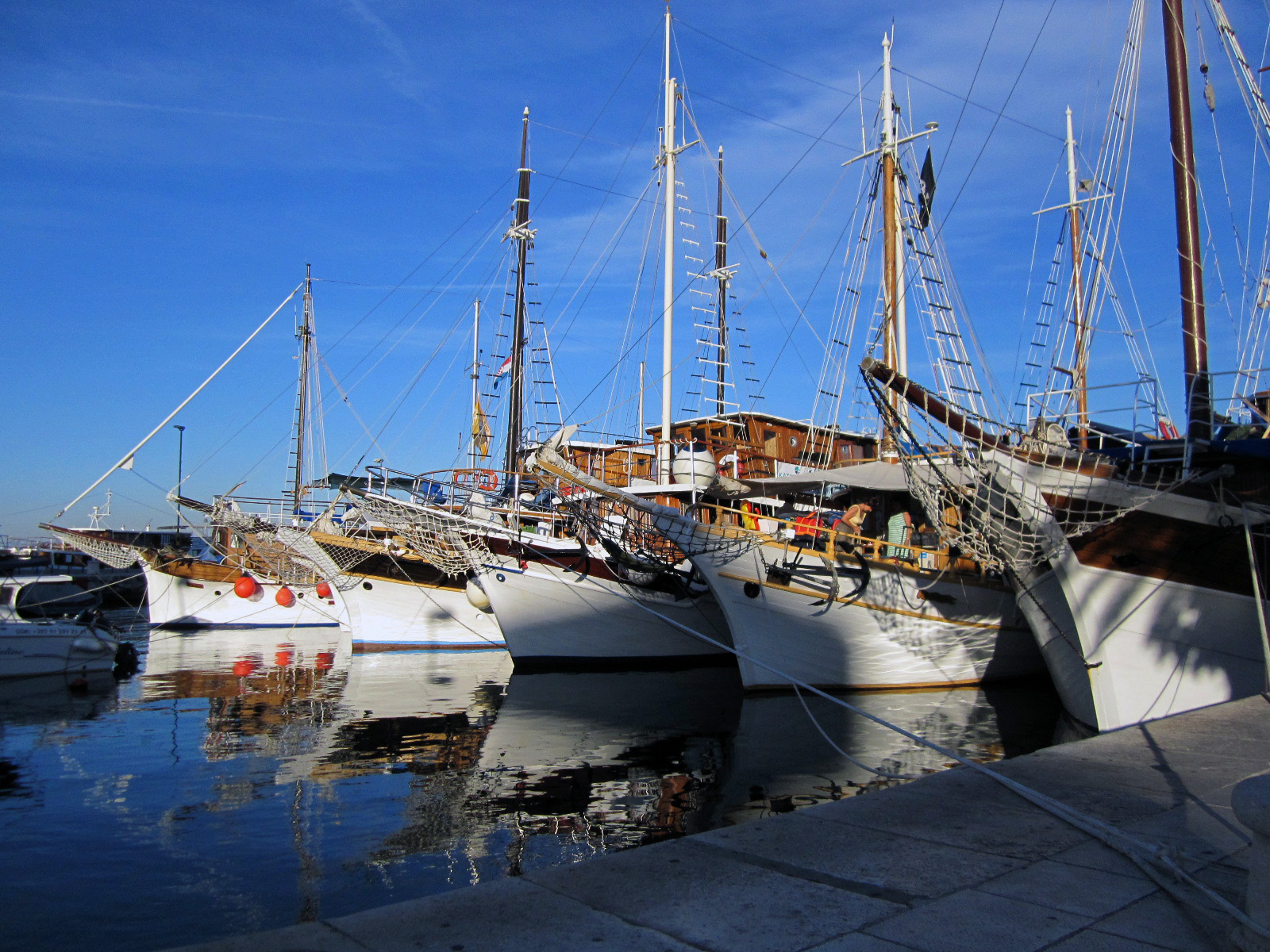 We’re also directly across from the dock where the Katarina Cruise line parks their old wooden hulled cruise ships at night. These mini “love boats” have a few cabins, a dining hall and a lounge deck. They travel throughout the islands in the Adriatic and at night they line up parallel to each other at various island ports. In order to get to your boat you have to walk through one boat to the next. In Hvar, they were parked 5 across. It was really beautiful to watch from our window out to the harbor. At around 2:30am we also discovered that 5 boats across made for one hell of a party. But, not a problem. We fell asleep minutes after it woke us up. As the receptionist said the next morning, “hey, you were once young.” He was right.
We’re also directly across from the dock where the Katarina Cruise line parks their old wooden hulled cruise ships at night. These mini “love boats” have a few cabins, a dining hall and a lounge deck. They travel throughout the islands in the Adriatic and at night they line up parallel to each other at various island ports. In order to get to your boat you have to walk through one boat to the next. In Hvar, they were parked 5 across. It was really beautiful to watch from our window out to the harbor. At around 2:30am we also discovered that 5 boats across made for one hell of a party. But, not a problem. We fell asleep minutes after it woke us up. As the receptionist said the next morning, “hey, you were once young.” He was right.
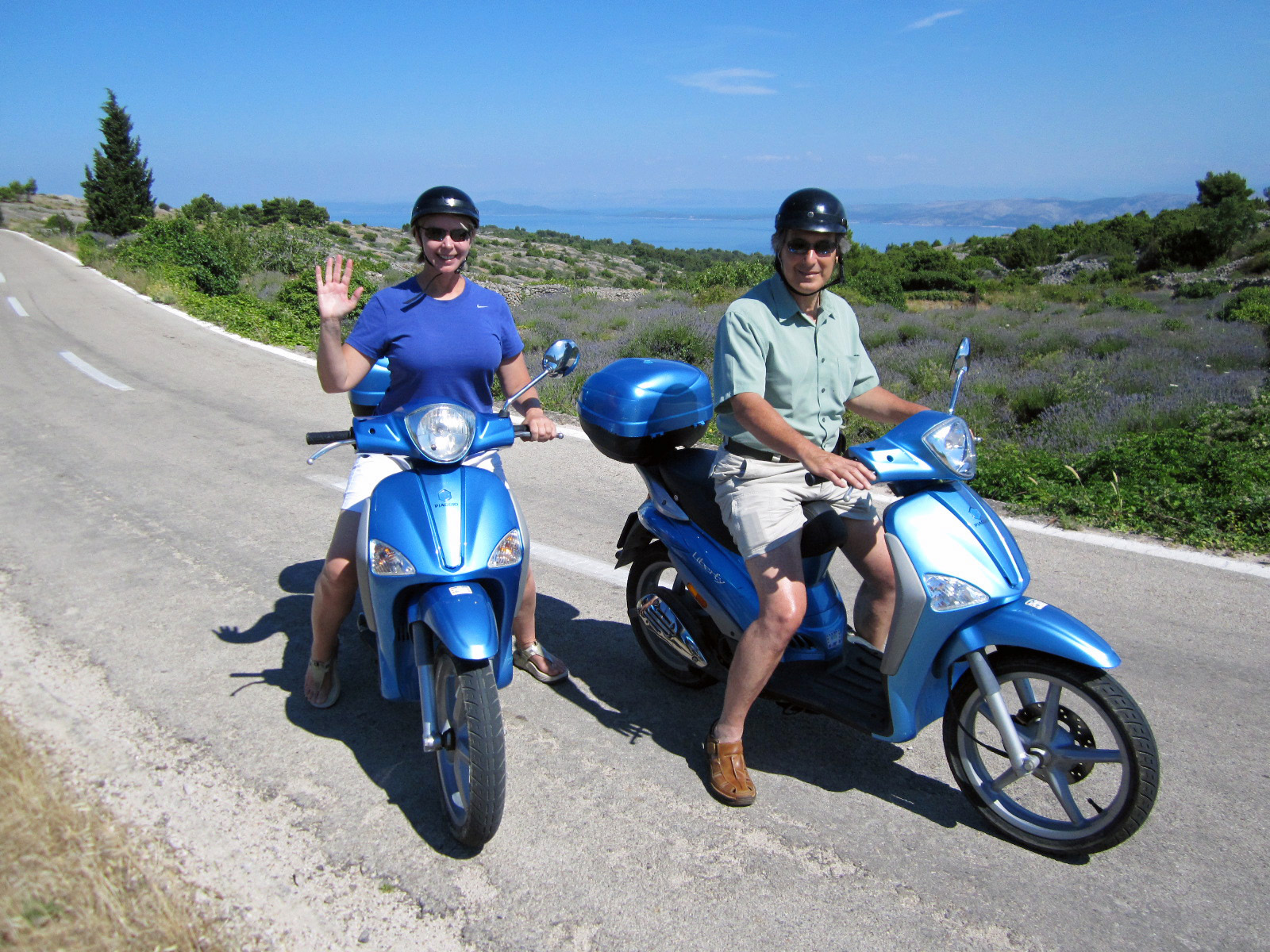 We rented a couple of motorini (50cc Piaggio Scooters). You really have to turn them full throttle to get them moving. Going uphill takes a while.
We rented a couple of motorini (50cc Piaggio Scooters). You really have to turn them full throttle to get them moving. Going uphill takes a while.
We took the old north road from Hvar Town to Stari Grad, through the wild lavender fields and old terraces of stone walls that cover almost every hill.
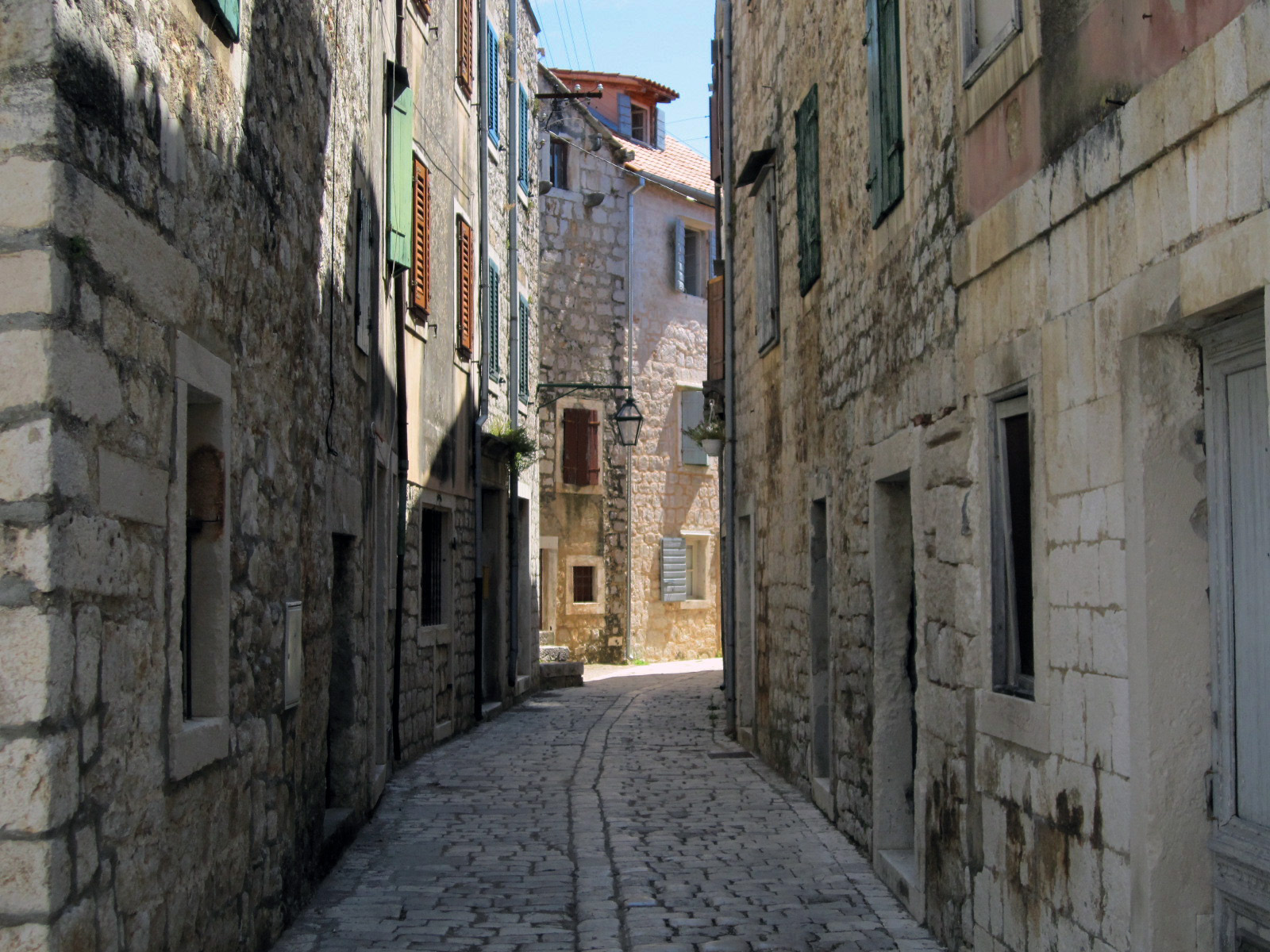 Stari Grad founded in 385 BC by the Ionian Greeks. It was the first development on the island. The locals don’t say that the old town has been restored or preserved, they just tell you it hasn’t changed much.
Stari Grad founded in 385 BC by the Ionian Greeks. It was the first development on the island. The locals don’t say that the old town has been restored or preserved, they just tell you it hasn’t changed much.
The ships from Split come into Hvar Town but most of the maritime traffic come to Stari Grad. It’s a much bigger Port. We stopped for lunch and chatted up a couple from Piedmonte who drove to Split and came over from Split on a car ferry. It’s a pretty town but we were eager to get back on the bikes and explore more of the island.
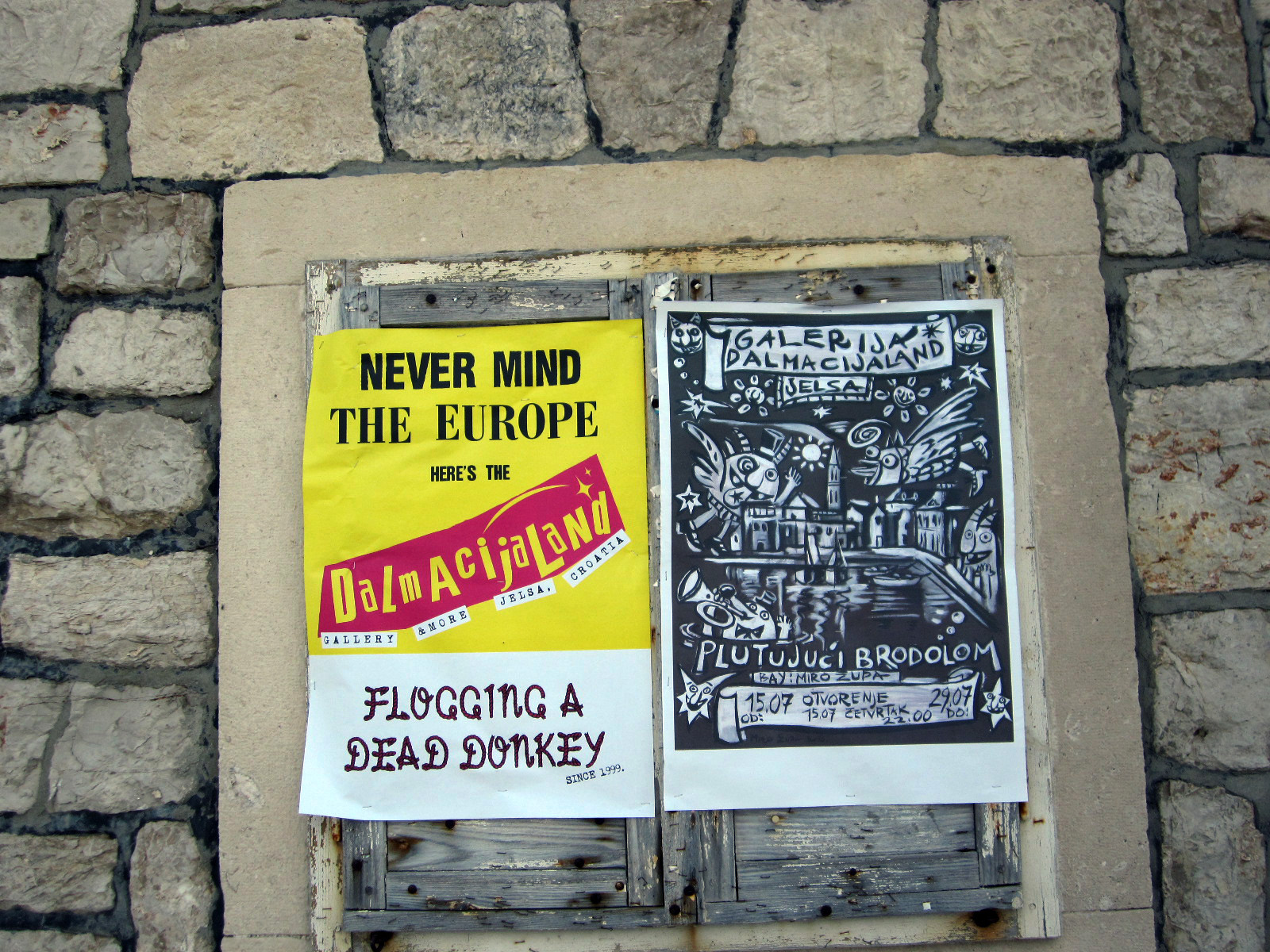 Onto Jelsa, a beautiful harbor coming off the tallest peaks on the island, St Nikola and Hum to the south and Vrh, Somotorac and Gozd to the north. Jesla is much smaller than Hvar Town and Stari Grad but it seems to have a younger and more energetic scene. This was one of the posters we ran into for some local music.
Onto Jelsa, a beautiful harbor coming off the tallest peaks on the island, St Nikola and Hum to the south and Vrh, Somotorac and Gozd to the north. Jesla is much smaller than Hvar Town and Stari Grad but it seems to have a younger and more energetic scene. This was one of the posters we ran into for some local music.
On the way back we drove through a 4.5km tunnel through the mountains and stopped off at a stone beach for a couple of hours of sun on the rocks and a swim in the clear acquamarine Adriatic.
 The following morning we took our last moto trip up to the Fortessa Spagnolo. Supposedly the foundations were built by Justinian in the 6th century.
The following morning we took our last moto trip up to the Fortessa Spagnolo. Supposedly the foundations were built by Justinian in the 6th century.
On Oct 1, 1579 a lighting bolt hit the gunpowder storage and blew up a third of the castle, but we only saw a sign telling us of the explosion. Everything was rebuilt pretty quickly.
The fortress has a small museum showing some ancient amphorae from the 3rd century, long before the fortress was built and there is a long climb down some very slippery stone stairs to the old Zatvoz (the Prison). The cells are small, dark and damp, but on the bright side they have a beautiful view of the harbor.
You must be logged in to post a comment.